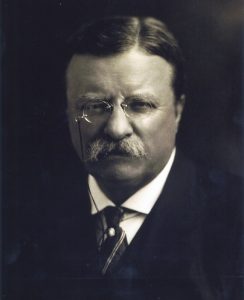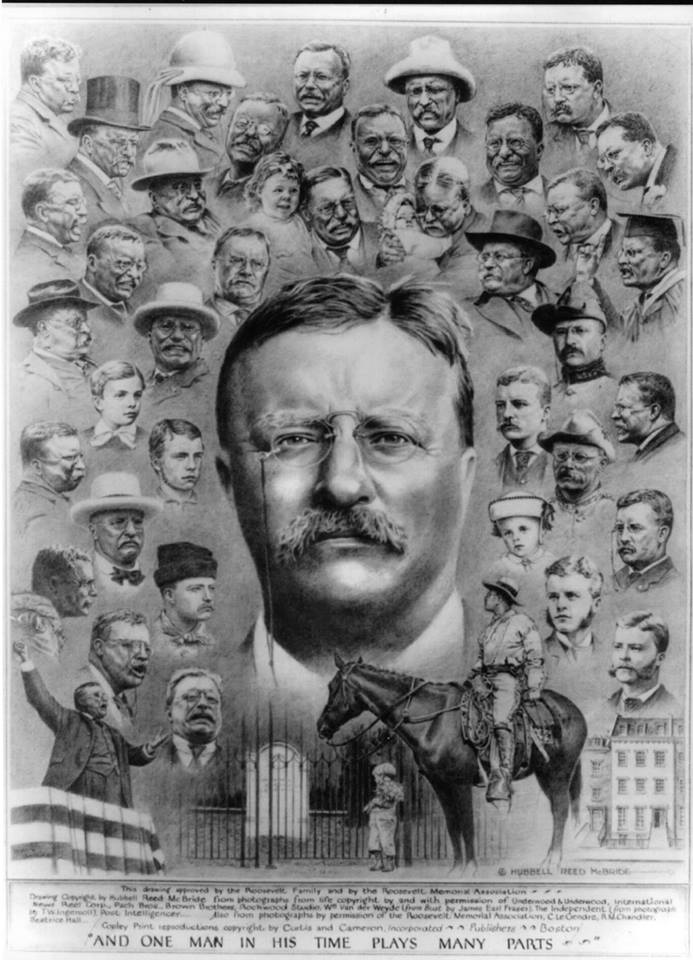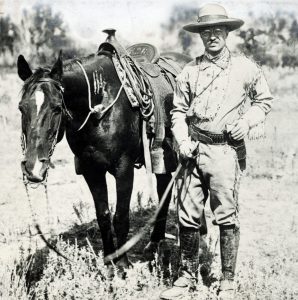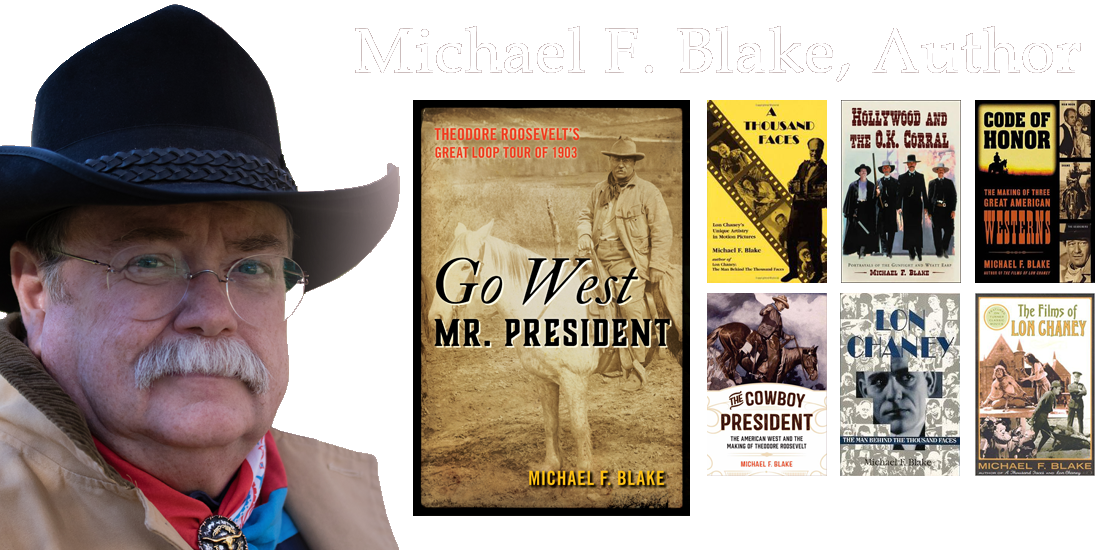On This Date – January 6, 1919: “The Old Lion Is Dead.”
Archie Roosevelt, who was home after being severely wounded in World War I, telegraphe d his two brothers, Theodore Jr. and Kermit, who were still overseas, with those words.
d his two brothers, Theodore Jr. and Kermit, who were still overseas, with those words.
Theodore Roosevelt died at at the age of sixty a hundred years ago today.
For me it is somewhat hard to wrap my mind around Theodore being gone for a century. Maybe it is because he is still so much in the public’s consciousness.
People still quote him, voters pine for his leadership, and books are still being written about him. (It is entirely possible that the amount of books on Theodore almost rivals those published about Lincoln.) At the Hall of Presidents attraction in Walt Disney World’s Magic Kingdom, part of the presentation features Theodore and his accomplishments as President, while at the American Adventure in Disney World’s EPCOT Center, we are treated to a brief encounter of Theodore and John Muir in Yellowstone discussing conservation.
Streets are named after him, as are parks and schools. Visitors to Mount Rushmore can gaze at his granite likeness, along with Washington, Jefferson and Lincoln. Ironically, Theodore was not an admirer of Jefferson, but considered Lincoln his favorite president. He is placed between the two men on the mountain.
Theodore Roosevelt was the first “public” President. Aside from newspapers and magazine covering him (back in the day when people actually read them!), he was also the first president to be covered by the emerging newsreels of the day. While nothing those the public would have in the 1920s thru the 1950s, the short newsreels of the early 1900s and 1910s, gave the public a chance to see their president in the flesh, moving and talking (despite the newsreels being silent). He was also in many homes by the use of the stereoscopes that allowed the average citizen to see TR in an early version of 3-D. (Stereoscopes were the forerunner of the later Viewmaster.) Those who had one of Edison’s Phonograph Cylinder players could actually hear his voice in a speech by 1910.
In various polls of the Top Presidents, Theodore places in the Top Five.
What is it that makes this man so popular a hundred years after his death?
Like Lincoln, he was the right man at the right time to lead the country. He was a war hero, although he was denied a Medal of Honor because he was highly critical of the Secretary of War in the mishandling of evacuating the troops from Cuba that were wounded or sick with malaria. It didn’t matter, although he truly wanted the medal, as he was more concerned about the men. Unlike other military officers, Theodore was on horseback, making himself a target, when he told his men to “follow me!” and charge up Kettle and San Juan Hills. In 2001, he was posthumously given the Medal of Honor, which resides in the Roosevelt Room of the White House.
He led by example.
Not just on the battlefield, but every where. At roundups in the Dakota Territory, he did the same work his men did. He asked no favors, nor did he take any.
As NYPD Commissioner, he enforced the Sunday law that forbid saloons from selling liquor, and when German immigrants protested in a march against him, he stood on the sidewalk and watched. When protestors cried out in German, “Where is Roosevelt?” he answered them back – in German – “I am here!”
Learning of the hundreds of white egrets being slaughtered on Pelican Island off the Florida coast for their feathers to adorn women’s hats, he asked his people was there any law in preventing him from making the island a Federal Bird Reserve. When told there was nothing to stop him, he slammed his hand down on his desk and said, “I so declare it!” and quickly signed the Executive Order. It would be the first of 51 bird reserves he would create during his presidency.
Catching the boat thieves in Dakota Territory, he put them in a wagon, walked behind the wagon in ankle-deep mud in February for 45 miles (36 hours without sleep!), to turn them into the marshal in Dickinson for trial. While cowboys admired him, they wondered why he didn’t simply hang or shoot them. They didn’t understand Theodore. He wanted justice, not revenge.
 When Indianola, Mississippi postmaster, a black woman named Minnie Cox, was threatened by white supremacists, she sent Theodore her resignation. He refused to accept it ,and kept her on payroll for the rest of her term (one year). He closed the post office in Indianola for the rest of her term, and informed the citizens they could collect their mail at the other post office – thirty miles away.
When Indianola, Mississippi postmaster, a black woman named Minnie Cox, was threatened by white supremacists, she sent Theodore her resignation. He refused to accept it ,and kept her on payroll for the rest of her term (one year). He closed the post office in Indianola for the rest of her term, and informed the citizens they could collect their mail at the other post office – thirty miles away.
By the time he left the White House, Theodore had set aside 230 million acres of land for the American public to enjoy. It is because of him the Grand Canyon is a place of wonder for all to see, just like the valley floor of Yosemite and the Devil’s Tower in Wyoming. (Steven Spielberg owes a debt of thanks to him for that location.)
A founder of the Bronx Zoo, he and William Hornaday devised a breeding program to save the American buffalo. Today, at the Theodore Roosevelt National Park, over 600 buffalo roam freely, as well as at other parks and reserves.
We all owe Theodore debt of thanks for standing up for the people and leading by example. His actions are still an inspiration to all of us. His words, spoken over a hundred years ago still speak to us, making an impact on all of us.
Theodore once said, “It is hard to fail, but it worse to never have tried to succeed.”
Well, Theodore, I’d say you succeeded more than you ever failed. Our country, ourselves, our parks, and the wildlife all are the better for you and your efforts.
Bully, indeed, sir!
